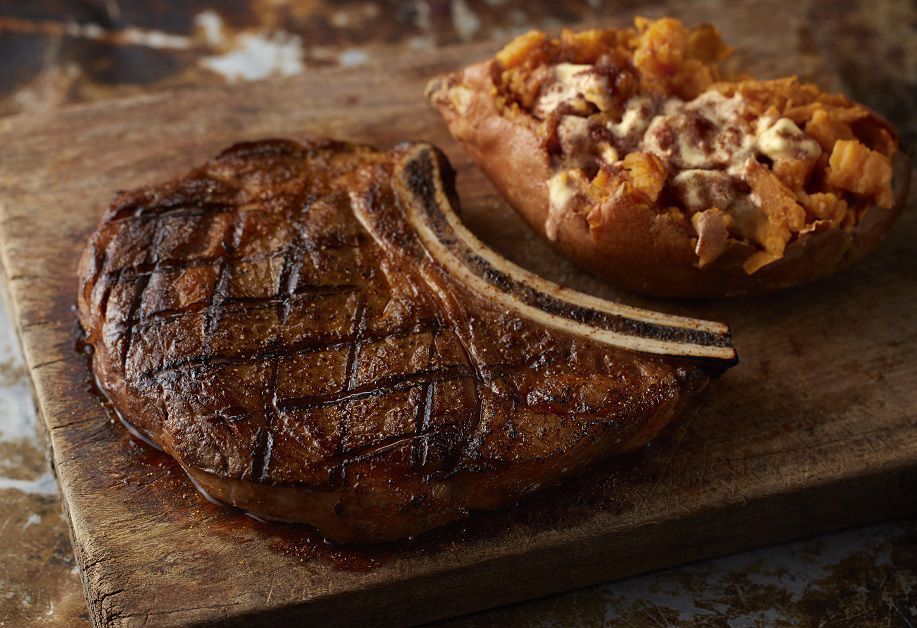Plus, the L.A. chef offers his predictions for the food world in 2018.
It’s been ten years since Roy Choi parked his Korean taco truck Kogi in front of a nightclub and became one of the first people to spark what would become a phenomenon in the restaurant industry—the now-ubiquitous food truck. Choi is now working on opening a restaurant at the Park MGM in Las Vegas, he has a line of food products with Williams-Sonoma and he’s still celebrating the successful launch of POT Pizza Joint. In the decade since he entered the food scene, he’s still conquering new territory. Choi has always been ahead of the curve, though. He’s just been waiting for the rest of the world to catch up.
“Everyone always looked at food trucks like the trend is going to end. I have been hearing that for ten years and it hasn’t,” he tells Food and Wine. “They're still serving a lot of people lunches in office complexes. We’re no longer the ones that you have to drive out of town and call the cops on. Food trucks are an essential part of people’s days. They are important to the fabric of feeding people, like hotel chefs cooking breakfasts or for weddings.”
He says this last part without an ounce of disparagement in his voice—this is not a criticism of the food truck system, but is rather meant to praise how necessary they have become to Los Angeles. Now, Choi sees the true originators of the food truck movement—the taco trucks—experiencing a renaissance in his city.
“There has been a resurgence of the roots of food trucks. There are really great taco trucks right now,” he says. “The original taco trucks survived the new wave, and the now [they’re] coming back with even better food. It’s gratifying to see that.”
Though Choi is considered an innovator in the food scene, especially when it comes to fusion cuisine, he still experiences moments of anxiety when introducing a new dish to the public. He recently had that experience with the opening of POT Pizza Joint, which serves a kimchi pizza.
“I was nervous and excited to see people accept it,” he explains. “There are certain foods that are somewhat sacred or you’re not supposed to mess with. When you do mess with them, it touches a nerve where you have to compare it to the original, and then that thing you’re creating has a loosing change right out of the gate.”
Still, Choi took a risk with the kimchi pizza, and it paid off. He found that when people eat his creation, they aren’t thinking about the Neopolitan origins of pizza, or scrutinizing his variation for all the elements that make up a classic slice. Instead, his diners can appreciate for the innovation for what it is.
“It just tastes delicious,” he says. “It's not even pizza anymore, but it is pizza.”
Choi—who is Korean-American—has long been playing with Korean-inspired flavors and ingredients in his food. Though this has been a largely fearless enterprise for him, Choi remembers a time when adding Asian influences to a dish may have been not only unwelcome, but looked down upon.
“[Korean flavors] weren’t so versatile when people would scrunch their nose and call our food stinky,” he recalls. “You have to give all props to David Chang. David was the first one to break through. That was the thing that opened the versatility up. Korean restaurants have always been the same, but when that window opened up, it just allowed people to look at it with a different lens.”
While Americans with Westernized palates may not have accepted these flavors until Korean chefs hit the mainstream, Choi is quick to point out that Korean-Americans, especially the children of immigrants, have always known how delicious their food is.
“The things that make Korean food delicious are garlic, ginger, soy sauce, sesame oil, chili powder and chili paste,” he explains. "They make anything delicious."
In order to cook Asian dishes properly in your own home, Choi says the most important thing to do is “take a step back and respect the differences in cultures.”
“This is not a one-shoe-fits type of thing,” he continues. “I see a lot of people doing fusion things [but] Korean food is not European food. I see folks trying to cook it like it’s beef bourguignon. You don’t have to cook it the traditional way, but it’s a difference in technique.”
Choi points to the fact that Korean recipes for braising typically don’t sear the meat, whereas in a French recipe, searing the meat is common practice.
“When you take that approach with Korean food you end with a murky product – it hurts the product.”
In his experience, home cooks also tend to underseason their food, so he recommends that they “focus on simplicity, season properly" and embrace "the less-is-more model.” For example, if you’re cooking a piece of meat, don’t try to be fancy. “The best way to do it,” Choi says, is to simply “roast with salt and pepper.”
You can expect to see all his favorite Korean ingredients continue to pop up in Choi’s food as he continues to expand his restaurant empire. He jokes that the next fusion cuisine to pick up steam in 2018 is “healthy milkshakes,” but he actually sees the whole world of food open to being molded into something new.
“Everything is up for grabs,” he says. “Meatloaf, casserole, even the cherished hero—we can mess with those. I think this year is up for grabs.”























